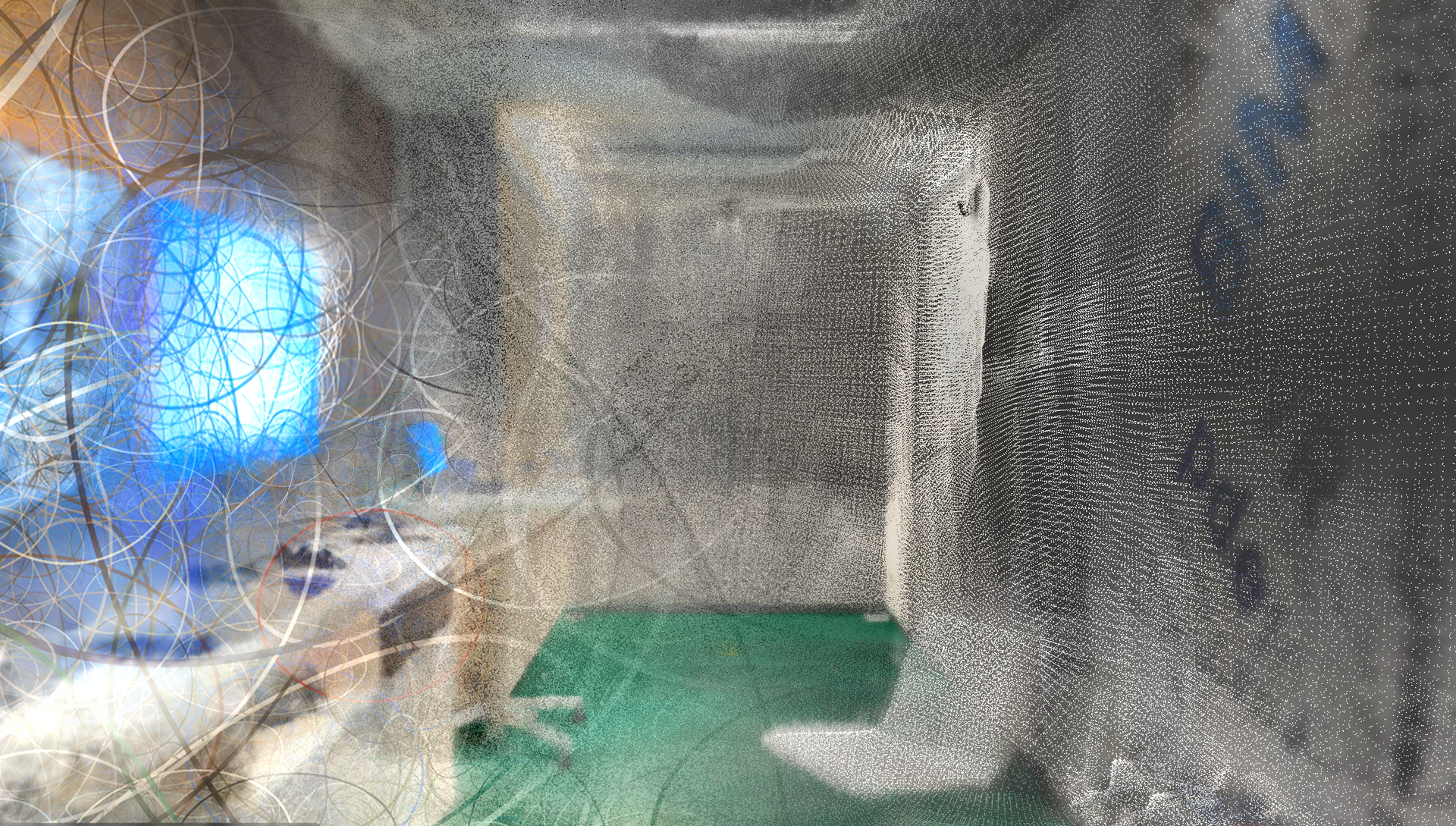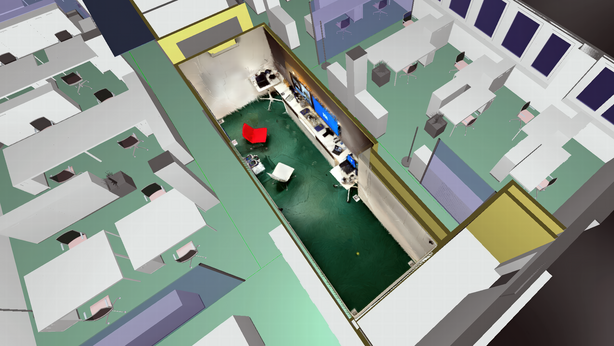- News
- Von NeRFs bis Gaussian Splats
On piont: point clouds as the basis for planning processes
In a nutshell: The strength of pointclouds lies in their countless details. They are an important basis for planning processes and enable the precise comparison of digital twins with the real world. But how are point clouds actually created?
- Laser scanning: Modern laser scanners capture millions of points on a building and create a high-precision point cloud from them. This is suitable for surveying, target/actual comparisons and construction progress documentation. Color values can also be added using 360° cameras.
- Photogrammetry: Here, the point cloud is created from the analysis of numerous photos, e.g. from drones. Software recognizes similarities and reconstructs the geometry - particularly suitable for terrain surveys and construction site documentation.

- Mobile scanning: Lidar-enabled smartphones enable quick and easy point cloud scans - ideal for interiors and smaller objects, albeit with a limited range. The screenshot below - created with the Cintoo software - shows an office interior scanned via smartphone app in a 3D model.
- AI-supported processes (NeRFs, Gaussian splats): New technologies use artificial intelligence to generate realistic 3D models from image material. They offer exciting perspectives, but do not yet achieve the precision of traditional methods.
Depending on the application, our BIM experts at pde combine these methods to achieve even better results.
While laser scanning and photogrammetry have long been established methods for creating point clouds, new methods are enabling ever more realistic 3D representations from less and less source material.
- Neural Radiance Fields (NeRFs):
NeRFs use neural networks to reconstruct a complete 3D scene from just a few images. The result: photorealistic views from any perspective. However, this method requires high computing power and is less suitable for precise measurements.
- Gaussian splats:
An even newer technique that delivers impressive results, especially for transparent, reflective and blurred surfaces.

An intelligent spatial distribution of the dots creates a soft, realistic surface - in real time! Thanks to lower computing requirements, such photorealistic scenes can even be viewed in virtual reality (VR). The photo above shows a conventional point cloud and, on the left, the Gaussian splats with a blending of their outer boundaries. This makes it easy to see the difference.
These technologies are developing rapidly and are combined by our specialists at pde depending on the application.